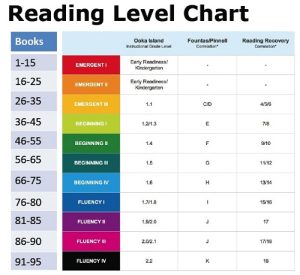
Matching texts to readers is a common strategy in many classrooms and school libraries, with some teachers spending significant amounts of time, money and energy organising books according to a level. The concept of levelling can be traced back to Bett’s (1946) paper which was based on a single study of 41 fourth graders over 70 years ago (cited in Glasswell & Ford, 2011). It is not that levelling books is an inherently bad idea, it’s just that it becomes problematic when it’s implementation becomes rigid, especially when it results in a child being prevented from reading a book because it is not the ‘right level’.
Glasswell and Ford (2011) outlined five key issues regarding the levelling of texts.
-
Levelling takes a complex idea and makes it too simple.
Reading is a complex act that requires an interaction between the reader and the text. Consequently, a reader’s understanding of the text is influenced by their own background knowledge. In fact, five major reader factors (motivation, subject knowledge, background experience, vocabulary and purpose), five major text factors (content, format, concepts, organisation and author’s purpose) and four major contextual factors (physical setting, activity outcome and emotional climate) were identified as impacting on the reading experience. By changing anyone of these factors, arguably you will also change the reader’s success in reading the text.
Levelling fails to take into account all these factors and consequently children can sometimes have more successful interactions with difficult text than at-level texts depending on these other factors. It is also important to keep in mind the criteria by which the texts have been levelled in the first place and the validity of this criteria.
-
Levelling takes a simple idea and makes it too complex.
The idea of providing students a range of texts that they can read with and without support is not inherently bad. However, the large number of discrete levels that a teacher may have to account for in one classroom may in itself be daunting and complex. What is the actual difference between the levels and how would this impact on appropriate instruction? The time spent juggling multiple baskets of books, assessing and defining levels and providing an appropriate level of instruction might be better spent on providing students with a rich and varied reading experience, developing their enjoyment of books and reading.
-
Reading levels are not the same as reading needs.
Glasswell and Ford explored this concept by providing a case study of a teacher who had a group of three students working at below grade level. The students had been grouped together in Level 1. Two of the students were in the group because they had the same reading accuracy profile (i.e., the same number of miscues). However, one of these students commonly guessed unknown words based on their initial letters, even if the words didn’t make sense in the context of the text. The other student guessed unknown word based on predictions of what would make sense in the context of the text or the accompanying pictures. The third student was in the group because although she could read the text fluently and with few errors she had very little recall of the story and was unable to answer comprehension questions correctly.
By organising the reading groups by focusing exclusively on the reading level, the teacher is not actually meeting the reading needs of these three students.
-
Progress does not equal proficiency.
The multiple discrete levels in ‘levelled programs’ may result in teachers losing sight of the fact that although a student is making progress it may not be at a rate that will help them achieve year-level benchmarks. To ‘catch-up’, a child who is behind must make more than 12 months improvement in one academic year.
Glasswell and Ford identified two factors contributing to the widening gap between proficient and poor readers – the amount of time a child spends reading and the number of words read. Consequently, even if the same amount of reading time and instruction is provided to every child, the more advanced readers will be processing more words because they are reading longer, denser texts faster. Levelled readers, by definition, mean that children given books in the lower levels will be reading less words and receiving less practice.
-
Readers have rights (as well as levels).
Readers have the right to be engaged and stimulated and to contribute their thinking to discussions. This requires students to have access to age-appropriate material that challenges their thinking. While levelled texts may give students the opportunity to read independently, they also have the potential to limit children’s exposure to important learning experiences.
Glasswell and Ford finished by arguing that children need to read books that will help them grow as readers. The challenge faced by teachers is to determine each child’s reading needs and how these needs can best be met. This includes realising that reading needs are different from reading levels and that children need texts that are cognitively demanding and emotionally engaging.
Reference
Glasswell, K., & Ford, M. (2011). Let’s start leveling about leveling. Language Arts, 88(3), 208–216.
